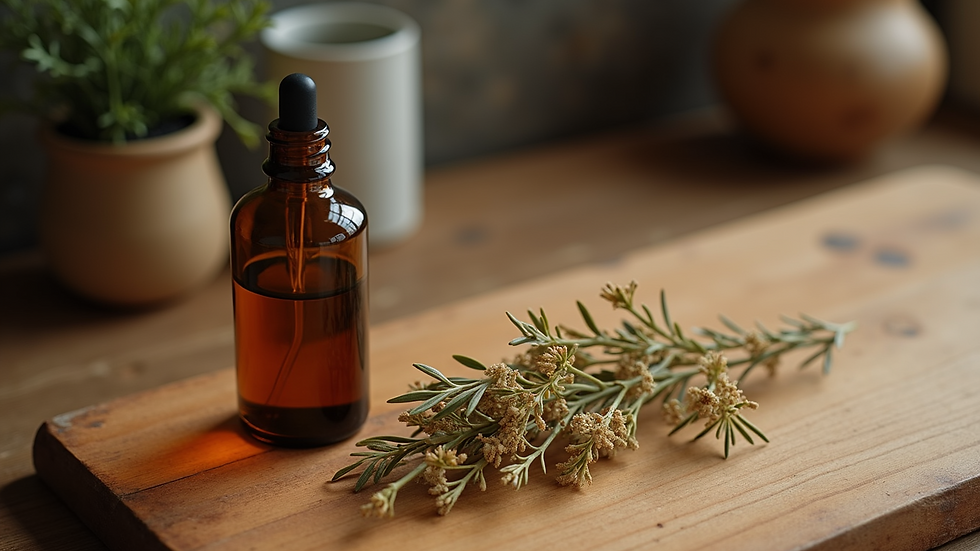Unlock the Secrets of Perfume Crafting with Perfumery Grade Ethyl Alcohol
- subalaoffice
- Jul 11
- 4 min read
Creating your own perfume blends is not just a hobby—it’s an art form that anyone can enjoy. Whether you’re an experienced artisan or just curious, crafting your unique scents can be both exciting and fulfilling. At the center of this craft is perfumery grade ethyl alcohol, a versatile base that empowers you to unleash your creativity. In this post, we’ll explore how to effectively use this product in your fragrance-making process and highlight its benefits for all skill levels.
The Essence of Perfumery Grade Ethyl Alcohol
Perfumery grade ethyl alcohol, commonly known as ethanol denatured for perfume making, is produced with the highest purity standards in mind. With a remarkable purity level of 99.9%, this alcohol serves as an ideal solvent for various fragrances. By using high-purity ethanol, you ensure that your custom scents retain their intended notes, allowing for a broad spectrum of aromatic possibilities.
For example, combining this alcohol with essential oils allows you to create scents ranging from fresh citrus notes (like orange and lemon) to deep, earthy aromas (like patchouli). This versatility gives you the freedom to craft fragrances that truly reflect your personality.
With its ease of use, perfumery grade ethyl alcohol is accessible to both novices and seasoned perfumers. Whether you're just starting or refining your craft, this alcohol provides the flexibility to create exquisite perfumes that are uniquely yours.

Benefits of Choosing Perfumery Grade Ethyl Alcohol
1. High Purity
The standout quality of perfumery grade ethyl alcohol is its high purity of 99.9%. This purity ensures that no unwanted scents or impurities interfere with the fragrance’s integrity. For instance, if you blend lavender essential oil with this alcohol, the resulting perfume will capture the true essence of lavender without any off-putting undertones. Maintaining a clean base is vital for crafting high-quality perfumes.
2. Versatile Mixing Capabilities
This alcohol mixes seamlessly with various essential oils and fragrance oils. For instance, you might decide to blend floral notes like jasmine with warmer notes like vanilla. The alcohol acts as a reliable medium, allowing you to explore and refine your unique scent profile. Additionally, research suggests that around 70% of people prefer custom fragrances over commercial ones, making exploring different combinations even more rewarding.
3. Convenience of Availability
Packed in a generous 5-liter container, this product suits personal use and supports small-scale businesses and hobbyists alike. With ample supply on hand, you can experiment freely without the worry of running out. Other brands often sell smaller sizes, but having this quantity lets you dive deep into your creative process.
Crafting the Perfect Perfume: Step-by-Step Guide
Creating your own perfume can be an enjoyable and satisfying experience. Here’s a simple guide to help you get started:
Step 1: Gather Your Ingredients
You'll need:
Perfume-grade ethyl alcohol
Essential oils of your choice (such as rose, bergamot, or sandalwood)
Measuring pipette
Small glass bottle for storage
Knowing your scent preferences ahead of time can streamline the process.
Step 2: Determine Your Ratio
For beginners, a popular starting ratio is 20-30% fragrance oils to 70-80% alcohol. Adjust the ratio according to the strength you prefer, bearing in mind that fragrance oils significantly influence the final scent. For example, if you desire a strong scent, leaning toward 30% fragrance oils could be effective.
Step 3: Mix Your Ingredients
Using the pipette, carefully measure and add your essential oils to the glass bottle. Then, pour in the appropriate amount of perfumery grade ethyl alcohol. Seal the bottle and shake gently to blend the ingredients thoroughly.
Step 4: Let it Mature
Allow your mixture to sit for at least 48 hours—ideally longer. The aging process allows the scents to mix and evolve, enhancing complexity. Perfume can improve significantly over time, sometimes revealing new notes after a week or two.
Step 5: Enjoy Your Creation
Once matured, your perfume is ready for use! Testing it on a scent strip or directly on your skin can help you determine if it captures the aroma you intended. If needed, you can make adjustments, perhaps adding a few drops of another essential oil.

Community and Resources for Perfume Makers
As you embark on your perfume-making journey, consider joining workshops or online forums dedicated to fragrance crafting. Engaging with others who share your passion can offer a wealth of knowledge and inspiration. There are numerous online resources, including video tutorials and blogs, that cover advanced techniques, further expanding your skills.
Additionally, sharing your experience through blogs or social media can attract others interested in fragrance creation. Testimonials from previous users or fellow creators can provide validation and encouragement, helping to foster a supportive community.
Your Path to Fragrance Creation
Perfumery grade ethyl alcohol is a vital ingredient in the world of perfume-making. Its high quality, versatility, and ease of use make it the ideal choice for anyone looking to create personal fragrances.
Embrace the journey of scent crafting as a dynamic art form that flourishes with creativity and exploration. Whether for personal joy or as a budding business idea, the possibilities with perfumery grade ethyl alcohol are boundless.
By following the tips in this guide, you can maximize your perfume crafting endeavors and nurture a rewarding hobby. Venture forth and let your creativity shine as you explore the aromatic universe of perfume-making.






Comments